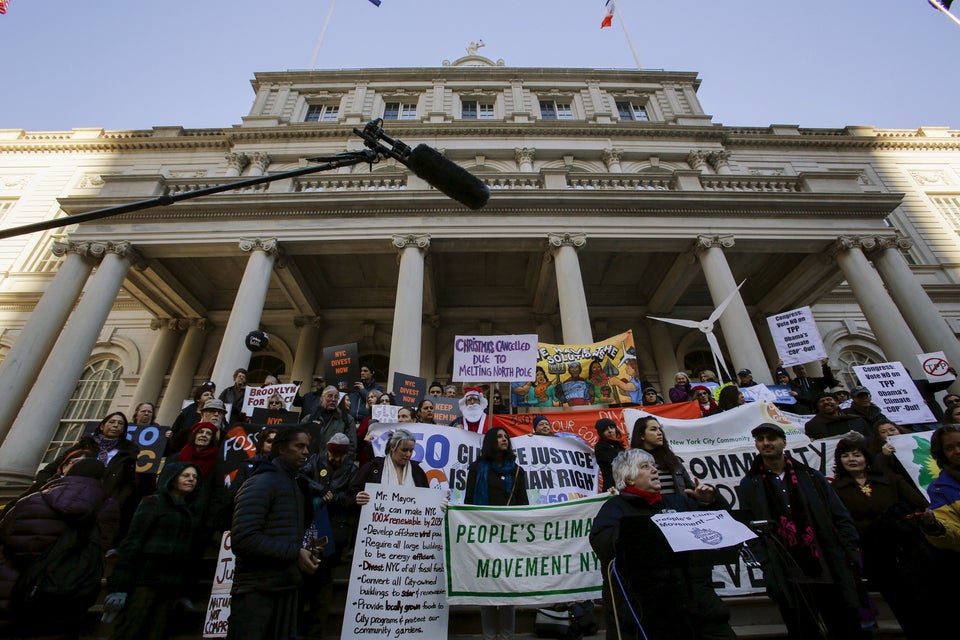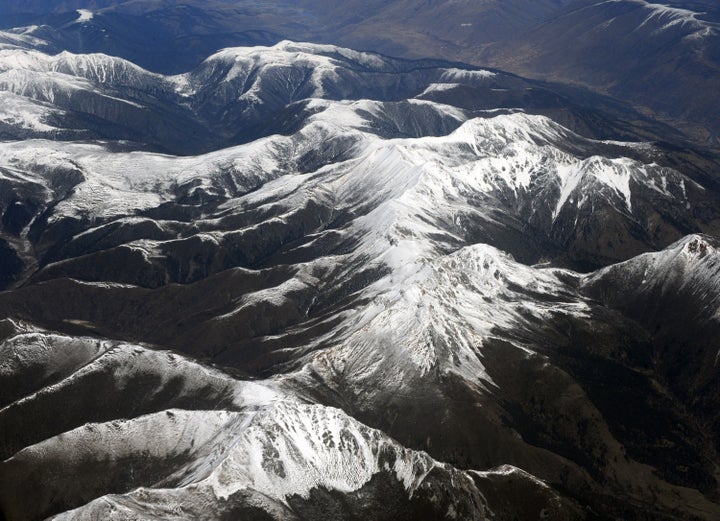
The glaciers of western Tibet have been stable for thousands of years. But climate change is now threatening that status quo.
Two enormous ice avalanches ripped through the area in the summer, forever transforming the landscape. Global warming likely triggered the icefalls, new research suggests.
Once unheard of, such disasters could become more frequent in the region, scientists warn.
On July 17, more than 60 million cubic meters (or 24,000 Olympic swimming pools) of ice and rock broke off without warning from a glacier in Tibet’s Aru Mountains and hurtled down into a valley below. Within minutes, the avalanche had buried an area of almost four square miles in debris up to 100 feet deep. Nine herders were killed, along with hundreds of sheep and yaks.
Satellite imagery offers a glimpse into the magnitude of the disaster. This NASA image shows the Aru range before the avalanche:
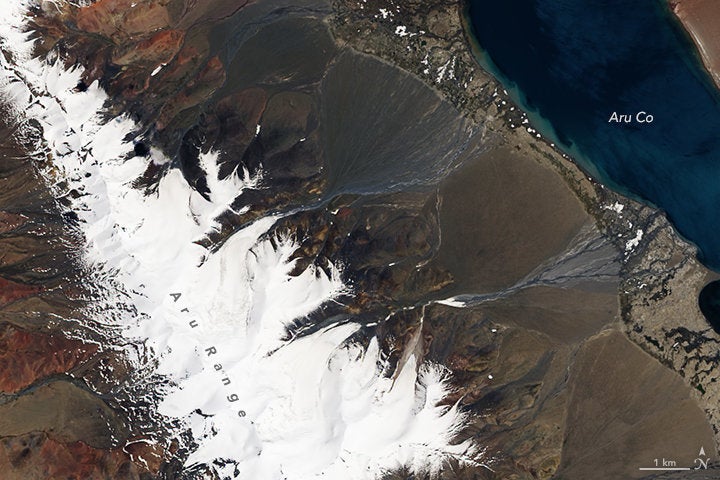
This image shows the aftermath:
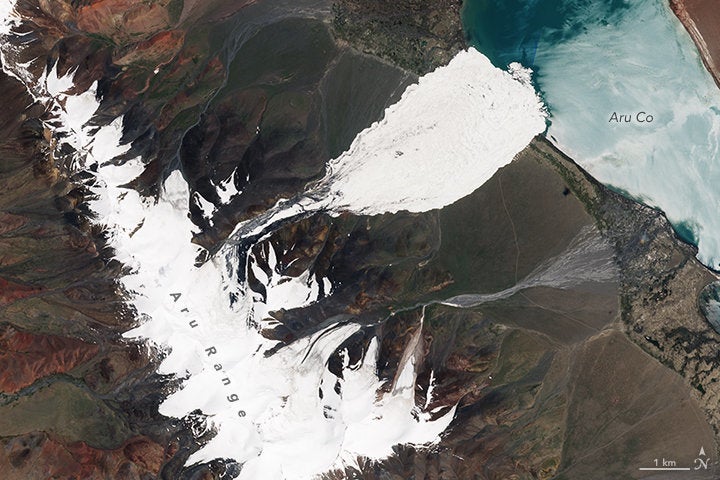
Glacial collapses of this size are extremely rare. The July incident was the second largest ice avalanche ever recorded, only eclipsed by the collapse of the Kolka Glacier in the Caucasus in 2002.
“This is new territory scientifically,” Andreas Kääb, a glaciologist at the University of Oslo, told NASA Earth Observatory in September. “It is unknown why an entire glacier tongue would shear off like this. We would not have thought this was even possible before Kolka happened.”
Western Tibet has also long been considered a stable glacial region. Unlike southern and eastern Tibet where glaciers have been melting at an accelerating pace, the region had seemed relatively unscathed by warming temperatures.
But then a second, similarly “massive” avalanche that hit a neighboring glacier on the same mountain range two months later. There were no reported injuries in that snowslide, but the occurrence shocked scientists and locals alike.
That “one such event should occur is remarkable; two is unprecedented,” wrote geoscientist Dave Petley in an October blog post.
Petley opined at the time that climate change was likely the culprit behind the two icefalls.
Tibet is “warming rapidly,” he wrote. The country is heating up at an average of 0.4 degrees Celsius a decade ― double the global average, according to the Guardian.
A paper published last week in the Journal of Glaciology supports Petley’s claim.
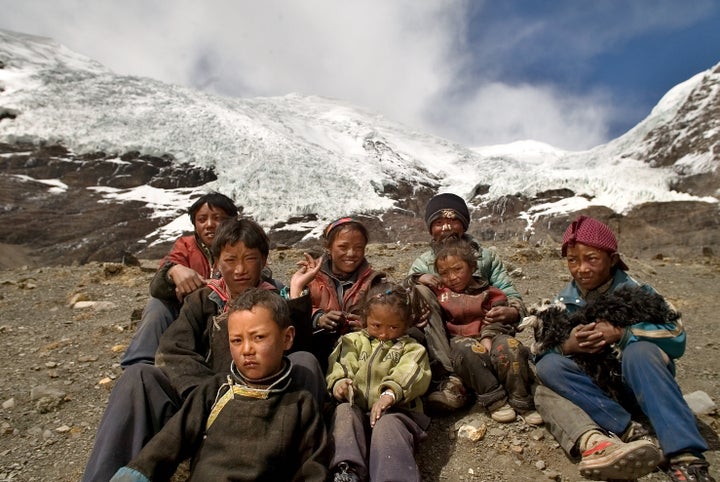
Baffled by the sheer speed and enormity of the two avalanches, a group of international scientists used computer models and satellite data to figure out a possible cause.
Something had lubricated the ice to make it fall so rapidly, they discovered. The most likely trigger was meltwater, formed by the melting of a glacier’s snow and ice.
“Given the rate at which the event occurred and the area covered, I think it could only happen in the presence of meltwater,” said co-author Lonnie Thompson, a professor of Earth Sciences at Ohio State University.
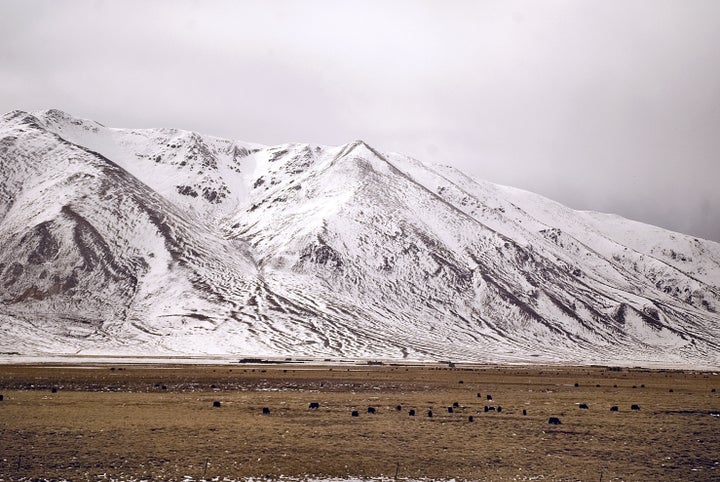
The origin of the meltwater in the Aru range is as yet unknown, but Thompson said the cause is clear.
“[G]iven that the average temperature at the nearest weather station has risen by about 1.5 degrees Celsius [2.7 degrees Fahrenheit] over the last 50 years, it makes sense that snow and ice are melting and the resulting water is seeping down beneath the glacier,” he said.
With temperatures continuing to rise, other glaciers in western Tibet may also be vulnerable to collapse. “If the climate warming in the region is the primary cause of the Aru Glacier collapse, then it will not be the last one,” the researchers wrote.
There is currently no way to predict such disasters.
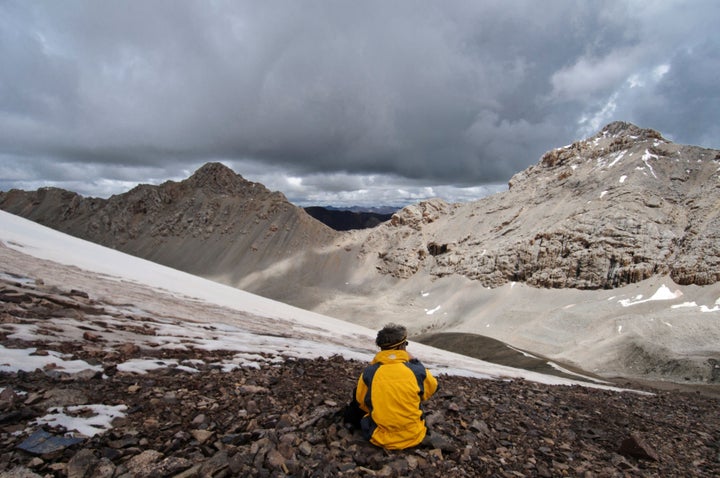
This is bad news for the Tibetan plateau as a whole. The so-called “roof of the world,” which encompasses most of Tibet and parts of China and India, is home to the largest volume of frozen fresh water outside the polar regions. As the source of several major rivers, including the Yangtze, Mekong and Indus, it supplies water to nearly 2 billion people in Asia, VOA News reports.
Scientists in China have warned that climate change is a severe threat to the Tibetan Plateau. The plateau’s glaciers are melting at a rate of 7 percent every year. If this melting trend continues, two-thirds of the glaciers on the plateau will disappear by 2050.

